Thank you for visiting! By the way… any links on this page that lead to products on Amazon and other stores/partners are affiliate links Aquarium Store Depot earns a commission if you make a purchase.
When it comes to betta fish, never believe what you hear. Unfortunately, most information surrounding these fighting fish is incorrect. And while a lot of good information is available, new and beginner hobbyists might not know the correct resources to find trusted information.
We’ve compiled a list of 50 betta fish facts that will introduce you to the truths and requirements surrounding these beautiful fish.
Key Takeaways
- There are many facts about betta fish, but not all of them are true.
- It’s important to do your own research for any pet, especially for bettas where misinformation is easily spread.
- Online communities, peer-reviewed articles, trusted websites, and fellow hobbyists can help answer questions about bettas and lead you on the path to having a happy and healthy fish!
How To Research Your Animal
Before buying any new fish or animal, you should know everything you possibly can about them. This is especially true when talking about betta fish. Unfortunately, there is a ton of misinformation surrounding betta fish and their aquarium husbandry.
As betta fish (also called siamese fighting fish) are seen as a beginner fish, many new hobbyists rely on local pet stores to relay all the information they need to get their aquarium started. While some store associates give trustworthy information, it’s important to use your own due diligence and research. Never purchase a fish without knowing its care requirements.
But how do you research bettas and how do you know what’s right information and what’s wrong?
Research can be tricky, but this hobby is built on the trial and error of its community. To start, make a list of questions you have. Some questions might be:
- Where do betta fish come from?
- How big do they get?
- How big of an aquarium do bettas need?
- What water parameters do they need?
- Can they be kept with other fish in the same tank?
These questions won’t lead you to a single answer. Instead, you’ll find a plethora of stories from hobbyists explaining their personal experiences with keeping these fish over decades. In addition to these firsthand accounts, search for university papers or otherwise published information. It is acceptable to do superficial searches to get started on researching a topic, but you should always cross reference and fully dig into the topic at hand.
While you’ll find many contradicting answers to your questions, this doesn’t mean that there is no right answer. The community agrees that there are bare minimum requirements for every fish species owned. To see if you fit those requirements, you should assess your budget, time availability, dedication, and intent.
50 Betta Fish Facts
Here are some fun facts to get you interested in keeping betta fish (also called Japanese fighting fish) or to remind you just how great these fish are! We have a video just for you from our YouTube Channel and our blog post goes into more detail below. If you enjoy our content, please be sure to subscribe!
1. Each One has its own unique personality
No two bettas are the same. Some are curious and friendly while others are lazy and aggressive. There is no telling what kind of personality your fish will have until it gets comfortable in its new home. Keep in mind that a fish’s personality will change given water and tank conditions in addition to tank mate settings.
2. They were selectively bred for competition
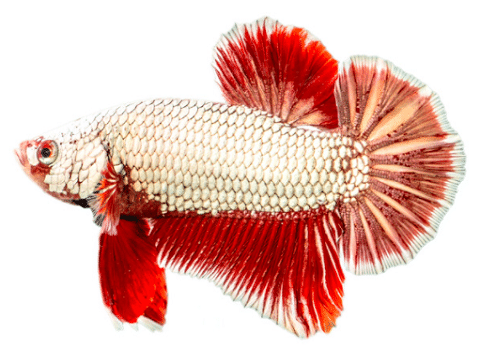
Almost 1000 years ago, royalty bred these fish for their best colors, tail shapes, and aggression. Through selective breeding, fish enthusiasts gambled wages with their fish in combative competitions. Later, these fish came to signify beauty and extremity in finnage and colors.
3. They are the national aquatic animal of Thailand
These fish are loved so much that they have been named the national aquatic animal of Thailand. In fact, some betta fish are bred to resemble the red, white, and blue stripes of Thailand’s flag.
4. They can be found in almost every color and pattern
This includes red, blue, green, and purple. In general, blue and red are the most common colors to come across. However, betta enthusiasts continue to push the genetic abilities of these fish, resulting in some unbelievable colors and patterns. Possible finnage has also been explored, resulting in some common occurrences such as crowntail, double tail, and halfmoon.
5. The rarest color is true albino white
The true rarest color is actually purple. However, no betta has been produced that is a true purple color. They are usually a lavender color instead.
On the other hand, albinism is a rare genetic mutation that affects melanin production. This results in less melanin or the complete absence of melanin, leading to a pure white fish with red eyes.
6. They are best kept in at least 5 gallon aquariums
Some hobbyists successfully keep them in 3 gallon tanks, but that wouldn’t be my personal recommendation. Instead, a 5 gallon aquarium leaves plenty of room for a betta fish to demonstrate its natural abilities without getting bored or stressed. A couple of snails may also be able to be comfortably kept in this tank size!
The Best Betta Fish Tank
Best filtration, best light, perfect size and with everything you need to get started. It was made for Bettas!
7. They need a constant water temperature
Betta fish are relatively hardy, but they need a constant water temperature between 78 and 80° F. Some hobbyists keep their betta tanks slightly above or below this, but consistency is more important than an exact temperature. To ensure a consistent temperature, it’s always recommended to use an aquarium heater.
8. They will fight each other and similar-looking creatures to death
Wild betta fish are naturally aggressive, but they have been selectively bred to demonstrate the most aggressive behaviors possible. In their natural habitat, betta fish are aggressive to fish trying to take their resources away from them, like space, food, and even potential mates. In the aquarium, space is limited, and most fish become a threat.
While this is especially true for keeping multiple male betta fish in the same aquarium, all betta fish may become aggressive towards similar-looking fish with flowing fins and bright colors. They may also be aggressive towards their own reflection in the glass!
9. They will flare their gills and fins
When upset, betta fish will flare their gills and fins to appear larger than they actually are. This can be very stressful for the fish if unwarranted. On the other hand, some hobbyists intentionally make their betta fish flare to provide some stimulation and enrichment. Again, this should be done sparingly to prevent your fish from getting injured.
10. There are over 70 different species
There are many bettas within the Betta genus. Many species have started making their way into home aquariums, but many are still unavailable for purchase. Until then, Betta splendens remains the most popular and widely known.
11. They originate from Thailand
Thailand was previously named Siam. This, in addition to their aggressive nature, led to their second common name, the Siamese fighting fish.
12. They can also be found across Southeast Asia
While they originated in Thailand, many wild species of betta can be found throughout several countries in Southeast Asia, including Indonesia, Malaysia, Vietnam, Cambodia, and Laos.
13. Betta splendens are found outside of their natural habitat
For a long time, Betta splendens could only be found in Southeast Asia. However, they have since been discovered in parts of South America, North America, and Australia. This could potentially be due to fish being released from breeding farms and local hobbyists.
14. They need little to no water movement in the aquarium
In fact, betta fish do best when there is no water current. In the wild, these fish are found in very slow-moving, shallow conditions. In captivity, they have been bred to exhibit ornamental finnage which can make it difficult for them to swim against excessive water currents.
15. They need good water quality
While hardy fish, betta fish require 0 ppm ammonia, 0 ppm nitrite, and low nitrates. In addition to a consistent water temperature, betta fish need constant water parameters that fall within their preferred ranges. Like other fish, bettas are susceptible to ammonia and nitrite poisoning if toxins are allowed to accumulate in the aquarium.
16. They do best in a planted aquarium
This fish species shines best in a planted tank that resembles its natural habitat but can be kept in most aquarium setups. This includes tanks with sand and gravel substrate with live plants, artificial ones, or other decorations.
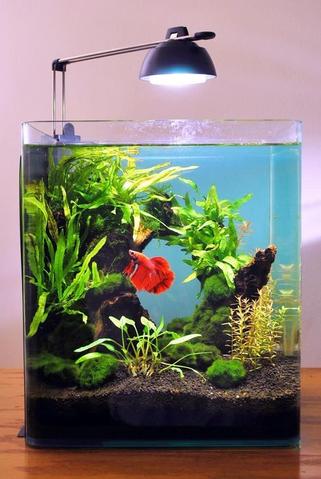
One thing is for sure, though, and that’s that betta fish love to rest on plants and decorations, especially near the surface of the water. Make sure that whatever you plan to decorate your aquarium with is safe for fish to use.
17. They will not eat live plants
These are one of the best fish for live plant setups! For the most part, betta fish leave live plants completely alone; these fish are naturally carnivores and won’t be interested in any greens available in the tank. That being said, some betta fish have been known to pick at plants, and some may even nip at plant roots if they’re exposed.
18. They live in very shallow water
In the wild, betta fish are found in shallow and often temporary pools and rice paddies. The location of bettas largely depends on the wet and dry seasons, when heavy rain floods forest floors and ditches. Their labyrinth organ and adept ability to jump allow them to survive such harsh conditions.
19. Some species are listed on the IUCN Red List of Threatened Species
Unfortunately, several species of betta are listed on the IUCN Red List of Threatened Species1. Some of these species include Betta simplex, Betta pinguis, Betta pardalotos, and Betta channoides. Reasons for being placed on this list include deforestation, habitat loss, and pollution.
20. There is one breed that looks like a snake
Not one of the most common species of betta fish to see, the snakehead betta (Betta channoides) looks like a snake! These fish have a very long body with a tapered head that resembles a reptile. Don’t worry, though. They are not dangerous and not any more challenging to keep than other bettas.
21. Females can be just as aggressive
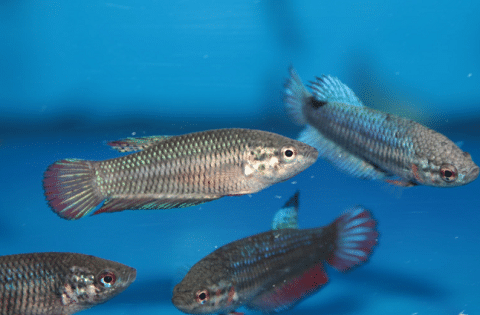
It’s often said that female betta fish are less aggressive than their male counterparts. This is a very large generalization and some female betta fish can actually be more aggressive! This is why it’s still recommended to keep betta fish by themselves in their own tank.
As we’ll see, some hobbyists have luck keeping all female tanks.
22. Males are more colorful and slightly larger than females
Female and male betta fish are pretty easy to tell apart. The biggest difference is that males are much more colorful and slightly larger than females. They also often have flowier tails and fins that can be used to attract females and intimidate predators.
23. They stay under 3 inches long
In general, betta fish stay under about 3 inches in length at adult size. However, some betta fish have very impressive finnage that can easily add another 1 to 2 inches in addition to their body length.
24. The biggest species can grow to be 7 inches long

The biggest species of betta fish is the giant betta (Betta anabatoides), which can grow up to 7 inches long! These fish should be given a little extra room in comparison to their smaller counterparts. In general, a 10 gallon tank size is recommended for one giant betta.
25. They can live with other fish species in a community tank
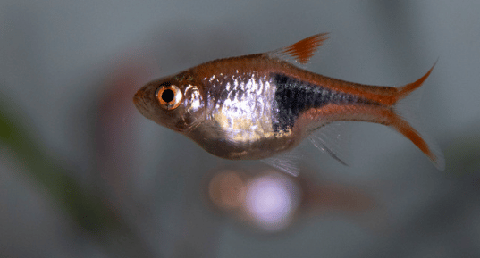
This is only true if personalities match. Some betta fish are simply too aggressive to be kept with other tank mates. However, more docile and accepting individuals have the possibility of being kept in a community with an assortment of tetras, rasboras, and even larger fish.
26. Some females can be kept together
A betta sorority isn’t possible for everyone, but some hobbyists have succeeded. A betta sorority is a group of female bettas peacefully living together in the same aquarium. This takes a lot of trial and error and can go very wrong if done incorrectly.
The keys to having a successful sorority are having a large tank, females that were raised together, and plenty of natural hiding spots and dividers that break up the line of sight.
27. Selective breeding made them more aggressive
While betta fish were originally bred for their bright colors, they were also bred to exhibit high levels of aggression. They would then be used to fight against each other in competition. This was a form of gambling common among nobility and royalty.
That aggression is still present in domesticated bettas. For this reason, it’s strongly believed that wild bettas are less aggressive.
28. Wild types are much less colorful than their domesticated counterparts
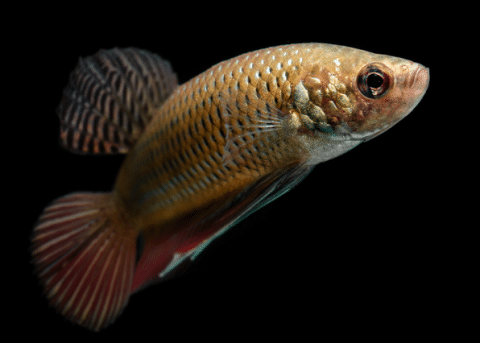
Similarly, domesticated bettas from breeding farms are much more colorful. This is because they have been selectively bred to display the most interesting and brightest colors possible. To this day, betta fish breeders study and manipulate genetics to get the best colors and combinations possible.
29. Males are responsible for taking care of the fry
That’s right! Female betta fish are only responsible for getting the eggs ready for fertilization. The male creates the bubble nest, fertilizes the eggs, places the eggs in the nest, and protects the eggs from predators.
30. Males create bubble nests at the top of the water

Using their labyrinth organ, male betta fish blow bubbles at the surface of the water to create mats of bubbles. These are prepared nests, ready to house fertilized eggs once connected with a female. As the eggs are fertilized, the male will catch them and place them into the bubble nest. After a few days, the eggs will hatch and paternal care will end.
31. Males may create bubble nests outside of reproductive periods
A bubble nest isn’t a true indicator that your male betta is ready to mate, though. In fact, excessive bubble nest building could be an indication that something is wrong with the tank. The main reason why betta fish have a labyrinth organ is to survive unfavorable conditions. If they start to gasp for air at the surface of the water or make bubbles, it could be a sign that something is wrong with the water parameters.
At the same time, male betta fish may create bubble nests for enrichment. This could also be a sign that your fish is bored and needs more interaction.
32. Some species are mouth brooders
While many betta fish build bubble nests, some are mouth brooders. This means that eggs and fry are raised in and around the mouth of the fish. One species of betta that uses mouth brooding is Betta rubra.
33. They live to be 2 to 5 years old
Betta fish aren’t the longest-living fish, but they can keep their owners company for a few years. Keep in mind that adult fish from the pet store are likely a couple of years old already. This can make it seem like they have an even shorter lifespan than 2 to 5 years.
34. The oldest one in the world lived for 10 years
While most fish only live to be about 5 years old, many surpass that average! Fish are a long-term commitment and a happy fish will easily live for a long time. Make sure that you set your aquarium up with years, possibly even decades, in mind.
35. They can make bonds with their owners
Betta fish are very smart and very curious. They easily recognize their owners and the person who feeds them. It is not uncommon for betta fish to welcome their owners every time they pass the tank; in many instances, they’ll also ask to be fed.
36. These fish can experience many emotions
Betta fish can experience a large array of emotions, like happiness, sadness, and boredom. Betta fish are very susceptible to becoming bored, lazy, and overweight. To help keep your fish engaged, make sure to regularly provide changes to the aquarium, like new decorations and toys. An occasional live food snack may also help get your fish to display its natural instincts.
37. They are very curious and need new stimulation for enrichment
Betta fish are extremely curious. Perhaps too curious.
Though solitary fish, bettas love interacting and being mentally stimulated. Things like mirrors, betta logs, and live foods can help bring excitement to your fish’s life. Otherwise, your fish may start to lose its color, lively finnage, and activity level.
38. They can be trained
With time and dedication, betta fish can be trained to jump for their food or swim through hoops! Betta fish are very smart, and their inquisitive nature makes them open to trying new things. Hobbyists have had success teaching their fish to do different tricks with a little bit of patience. In fact, there are even betta trick kits available for purchase. Some things you can teach your betta include following your finger, jumping and swimming through hoops, playing soccer, and allowing itself to be petted by its owner.
39. They are lazy
Not all betta fish can be acrobats. Some individuals can be pretty lazy and enjoy resting on floating logs and leaves instead of jumping out of the water. This can become problematic if the fish lacks exercise entirely. Betta fish can become overweight, constipated, or develop swim bladder disorder if left understimulated.
40. They are good jumpers
A betta tank should always have a secure lid on it as bettas are great jumpers. In the wild, they jump out of the water to move between locations and catch food. In the aquarium, jumping can be a sign of stress due to poor water conditions, stress, or improper care.

Betta fish are members of the Osphronemidae scientific family. This technically makes them a type of gourami even though they might not look like their aquarium trade counterparts. A fun fact is that gouramis also have labyrinth organs.
42. They have a labyrinth organ
This is a modified lung that allows these fish to breathe air from the water’s surface. These fish developed this organ in response to their natural habitats which can quickly evaporate or deteriorate in quality. For instance, a betta fish may find itself in a very small pool which starts to dissipate in oxygen levels. The fish may be able to survive by taking in atmospheric air until conditions improve.
43. They are mostly carnivorous
In the wild, betta fish heavily rely on insects for their source of protein. They especially enjoy eating insects from the top of the water. In the aquarium, they’ve adapted to a more omnivorous diet, accepting both meat- and plant-based foods.
44. One sold for over $1500!
The most expensive betta fish ever sold was a Thai-colored plakat betta for over $1500. This fish had perfect coloration that resembled the country of Thailand’s flag.
45. Bettas are greedy
Betta fish are greedy fish when it comes to feeding time. Only feed bettas when it’s time for them to eat or they will take advantage of every time you pass their tank. A good feeding schedule is about 2 to 3 pellets once or twice a day. Make sure to remove any uneaten food to avoid a messy tank.
46. A colorful specimen is a happy pet
Like other animals, betta fish show their best colors when they’re happy and thriving. To get your betta fish to show its best colors, provide them with a high-quality pellet or flake food. Then, ensure that water conditions are the best they can be with regular water testing, water changes, and tank maintenance.
47. Some may change colors throughout their lifetime
One breed likely to do this is the black, white, orange, and yellow koi betta. Over their lives, their patterns may change and colors might appear or disappear completely. This is due to the genetic makeup that makes these colors and patterns possible.
48. There is an organization specifically for them

There is an organization called The International Betta Congress (IBC) that promotes the spirit of these fish! You can connect with other betta fish keepers and show off your fish.
49. There are shows and conferences all about them
Hobbyists can attend conferences and live shows to learn more about their bettas and compete against other hobbyists.
50. They are hardy, colorful, and personable
This makes them excellent pets! Just make sure to learn everything possible you can before going out to buy your first betta.
Common Myths
We mentioned before that some information available about betta fish is false. Though betta fish awareness has increased in recent years, there is still a lot of misconception surrounding these fish.
Here are some of the most common betta myths you’ll likely hear at your local pet stores or from a mistrusted site.
Betta fish can live in small aquariums
No matter how many times we say it, there will always be someone trying to keep bettas in a small plastic fish bowl. No, betta fish cannot live in the small containers that you see at the pet store.
The bare minimum tank size for a betta fish is 3 gallons, with most hobbyists recommending at least 5 gallons. Though many stores sell all-in-one 1 gallon betta fish tanks, these kits usually lack the basics for keeping these fish alive past the first few days of having them. In addition, these kits are often overpriced for what you get.
In the long run, it’s better to buy all pieces separately, so you have full control over making a happy and healthy environment for your fish.
Betta fish don’t need a heater or filter
One of the pieces of equipment often lacking in these all-in-one betta kits is an aquarium heater. Or, if they do come with a heater, it’s a small, cheap flat heater that sticks to the side of the tank. While these heaters can work from reputable companies, they’re very prone to malfunctioning. On top of suddenly turning off or heating up too much, they are also impossible to calibrate.
Best Aquarium Heater
Finnex has achieved what we as hobbyist have asked for decades. A reliable heater that won't fail. Japanese components. Receives our top recommendation.
Bettas need a constant water temperature between 78-80° F. Though they originate from tropical areas where temperatures rarely fluctuate, they are not able to live under or much above this range.
While most betta kits include a filter, they’re usually not the best quality. Sometimes, these filters might actually be too powerful, which can knock your fish around the tank and cause injury. Bettas originate from calm, slow-moving waters. In the aquarium, water movement should be minimal to make swimming easy for your fish.
Again, it is strongly recommended to purchase an aquarium filter separate from any kit package.
Betta fish can be kept with other fish
This isn’t completely a myth but shouldn’t be followed by inexperienced hobbyists. Bettas are extremely territorial fish that have been known to fight and kill other fish that come too close to their space in the aquarium. Even if the tank is big enough, the betta may still attack if the other species have a similar appearance.
If you have a large enough tank, a docile betta, and a list of compatible species that can be kept with a single betta, then you may try introducing tank mates. It should also be noted that the vast majority of wild bettas are much more compatible with themselves and other fish than domesticated betta breeds.
On the same note, some hobbyists try to keep multiple female betta fishes together in the same tank. This is known as a betta sorority and can be successful in some setups. The secrets to having a successful sorority are having a large tank, plenty of live plants, and multiple female bettas that have grown up around each other or are naturally docile.
Be prepared that harems can go wrong very quickly and unexpectedly.
Betta fish can withstand poor water quality
Because bettas are often sold in tiny containers, new and inexperienced hobbyists sometimes believe they can be kept in those conditions indefinitely. These containers do not have filtration and are not heated, leaving toxic ammonia and other harmful nutrients to accumulate. Though this might not immediately affect the fish, bettas have developed chronic conditions due to poor water quality.
Like other tropical fish, betta fish need proper nutrients in their aquarium. This means 0 ppm ammonia, 0 ppm nitrites, and less than 40 ppm nitrates. To help maintain these levels, it’s recommended to add live plants and/or perform weekly or biweekly water changes. During these water changes, the substrate should also be vacuumed.
Betta fish don’t need a high-quality diet
Betta fish are beautiful fish, but only when given the care they need. Unfortunately, the pet trade can a business that cuts corners around the fish’s health. As a result, fins get torn and colors fade. This doesn’t mean that your fish can’t shine when it arrives in your home aquarium, though.
Many new hobbyists grab the first food they see on the shelf. This is usually a general tropical fish flake food, but we recommend Fluval bug bites for betta fish. In most cases, low quality flake is like junk food, with many preservatives, artificial dyes, and fillers.
Best Betta Food
Fluval bug bites is made of various insect and shrimp ingredients making this a high quality source of protein
In the wild, betta fish are carnivores. In the aquarium, they appreciate a wide variety of foods, including live, frozen, and freeze-dried options. If you’ll notice, they have upturned mouths that make it easy for them to breathe air and catch prey on the surface of the water. As a result, some of their favorite snacks are small insects that can bring out their natural hunting instincts.
Other good options include freeze-dried bloodworms, brine shrimp, and a high-quality flake or pellet food. Make sure to not overfeed your betta. These fish can be very greedy and will ask for food anytime someone passes the tank.
Betta fish don’t live long
Though betta fish don’t live as long as some other available tropical fish, bettas can stay with their owners for a reasonably long time. On average, bettas live for 2 to 5 years. The oldest betta fish on record lived to be 10 years old.
Something to consider is that by the time you introduce an adult betta fish into your home aquarium, that fish is already a couple of years old. This can make it seem like they have short life spans when the fish dies within the next few years.
Of course, factors like water conditions, diet, and predisposed issues play a part in how long your fish will actually live. But given the space to thrive, these fish will bring color to your tank for years to come.
Final Thoughts
There are many interesting facts about betta fish available on the internet, but not all of them are true. In fact, most ‘common knowledge’ about bettas is incorrect and misinformation. The only way to find the truth about these incredible fish is by doing your own research, listening to other hobbyists’ experiences, and finding out what works and doesn’t work for you.
- About the Author
- Latest Posts
I’m thrilled that you found Aquarium Store Depot! Here you’ll find information on fish, aquariums, and all things aquatics related. I’m a hobbyist (being doing this since I was 11) and here to help other hobbyists thrive with their aquariums! I adhere to a high quality Editorial Process and Review products with real life field usage and practical analysis.


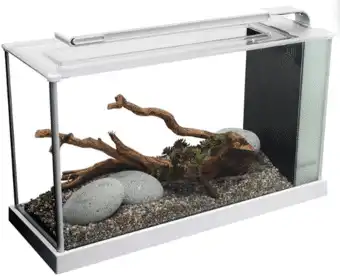






helped me *
Thank you for your comment. I’m glad it helped you :).
I thought this was a knowligeble and factual site . would highley reccomend and helpme find info for my betta
I thought this was a knowligeble and factual site . would highley reccomend